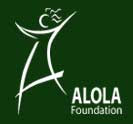Em prol da paz, do descanso dos resistentes
>> 20090402
Graves may hold Dili dead

Jon Sterenberg from the Victorian Institute of Forensic Medicine sits in a possible grave from the Dili massacre. Photo: Jill Jolliffe
"TWENTY-EIGHT years after Timorese families began searching for the remains of loved ones killed in an Indonesian army massacre, 16 bodies have been unearthed by Timorese investigators and experts from the Victorian Institute of Forensic Medicine.
If their identities are proven they will be the first bodies found of resisters to Indonesian rule shot down in Dili's Santa Cruz cemetery in 1991. They were discovered in unmarked graves at Hera, 15 kilometres east of the capital, last week. The last of the 16 cadavers was brought to Dili on Monday.
Gregorio Saldanha of the 12 November 1991 Committee said the breakthrough had come after a local gravedigger had testified that the army had forced him to bury the massacre victims in the local cemetery. "It was important to find a reliable source to recover the first bodies," he said. "It wasn't easy."
The massacre occurred after a UN-backed Portuguese parliamentary delegation due to visit East Timor was postponed after Indonesia vetoed several journalists due to accompany it.
A new generation of East Timorese nationalists had placed enormous faith in the visit. They took to the streets and for the first time since Indonesia's 1975 invasion unfurled banners demanding independence and supporting guerilla leader Xanana Gusmao.
The occasion was a funeral procession for Sebastiao Gomes, a student who had been killed by the army days before. When the youths reached the cemetery they were surrounded by soldiers who fired on the peaceful and unarmed crowd.
The filming of this event by journalist Max Stahl produced landmark footage that shocked the world, showing demonstrators who were often little more than children smeared in blood and praying for salvation from the bullets.
There were some estimates as many as 200 people may have died.
The killings triggered worldwide sympathy for East Timorese independence.
Mr Saldanha, a former East Timorese parliamentarian, was himself shot in the massacre and later served years in Semarang prison, Java, for his role in the demonstration.
Last year he formed the 12 November Committee to gather evidence from family members on the numbers of those killed and the possible whereabouts of bodies.
After months of investigation, the Victorian Institute of Forensic Medicine under Soren Blau became involved, with funding from the Australian Government. Their team vainly searched various sites indicated by family members last year.
Mr Saldanha said that after the massacre the Indonesian government had claimed only 19 people had been killed, and that the Hera site appeared to have held those 19 bodies, in separate unmarked graves, but the investigators found that three were empty.
"One had held the body of Kamal (Bamadhaj) but it was exhumed some time around 1995 and returned to his family," he said.
Kamal Bamadhaj was a student at the University of NSW and the only foreigner killed in the massacre, although various foreign journalists and activists marched with the demonstrators.
"Later the Indonesian government admitted under pressure that maybe 50 people had died," Mr Saldanha said, adding that the committee's current figures list 74 confirmed deaths.
Some family members had yet to be contacted so the number could be higher.(The AGE)















0 comentários:
Enviar um comentário